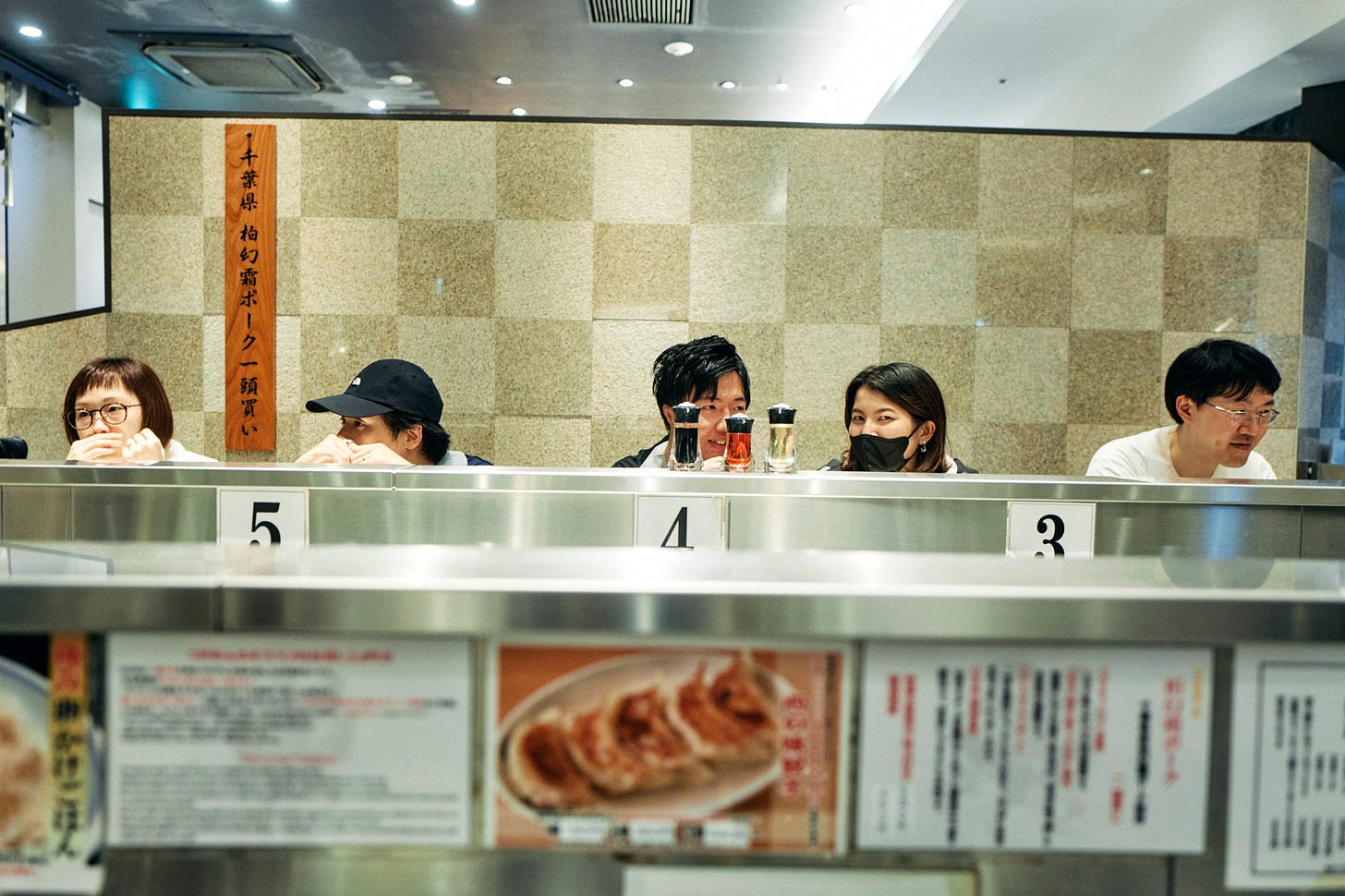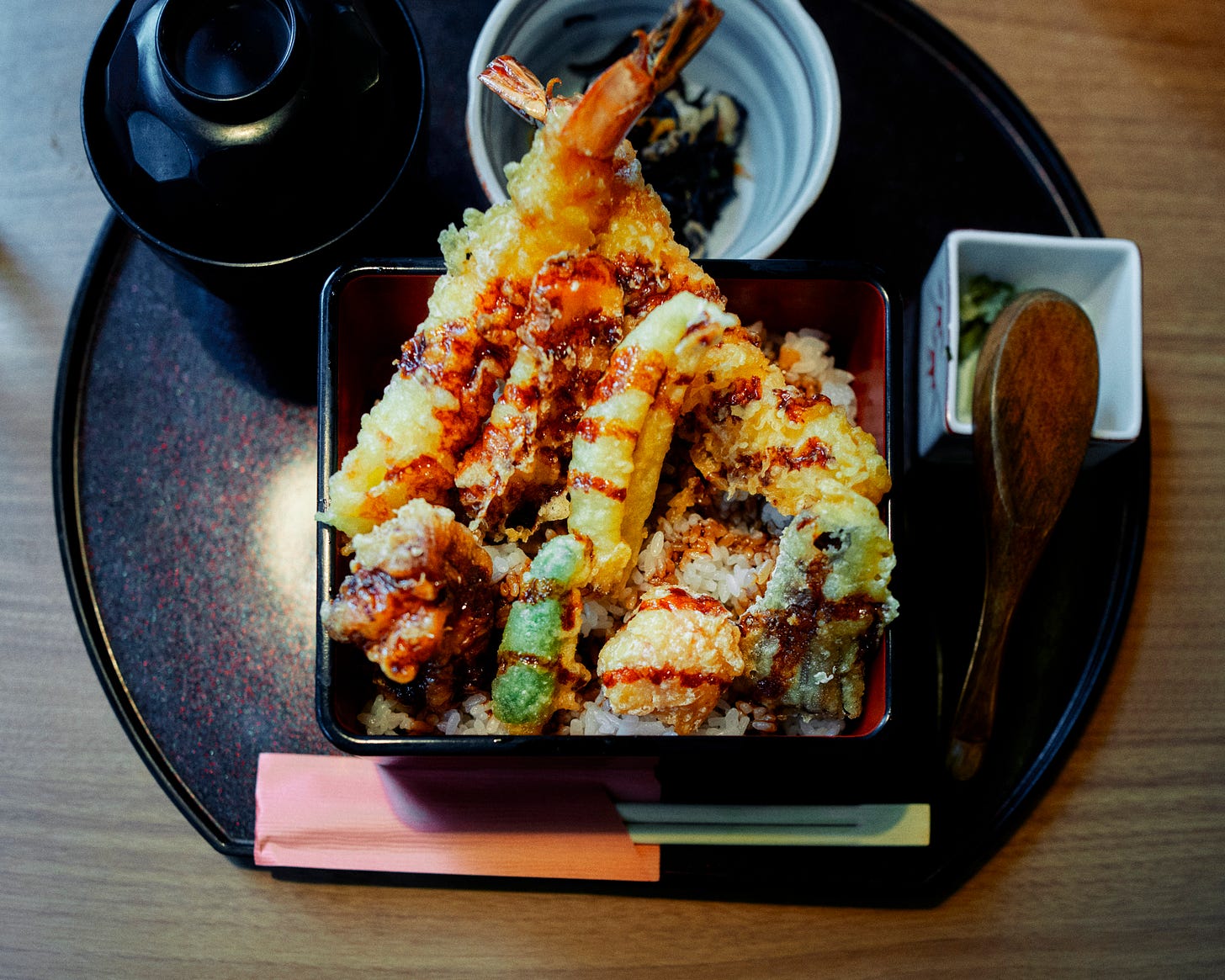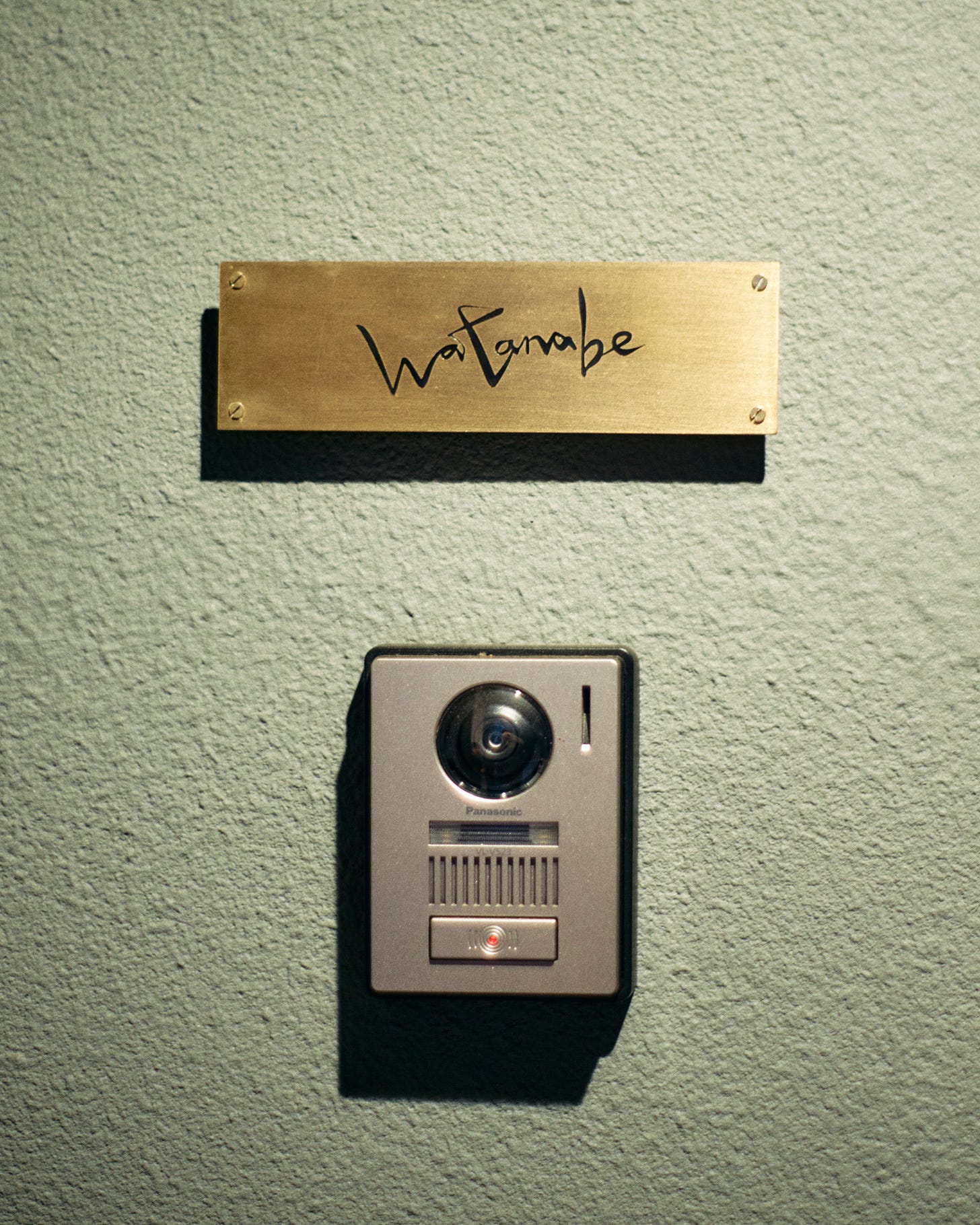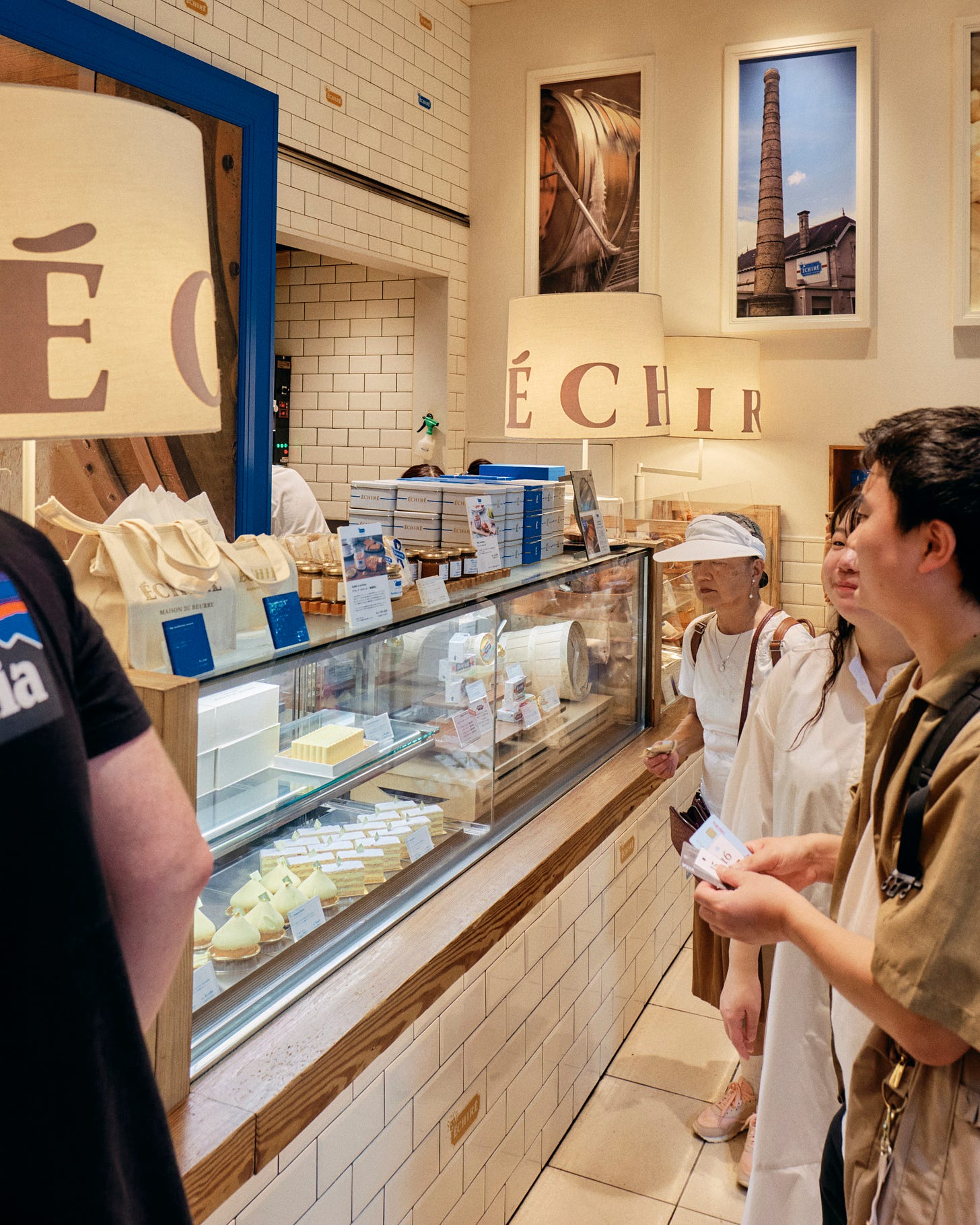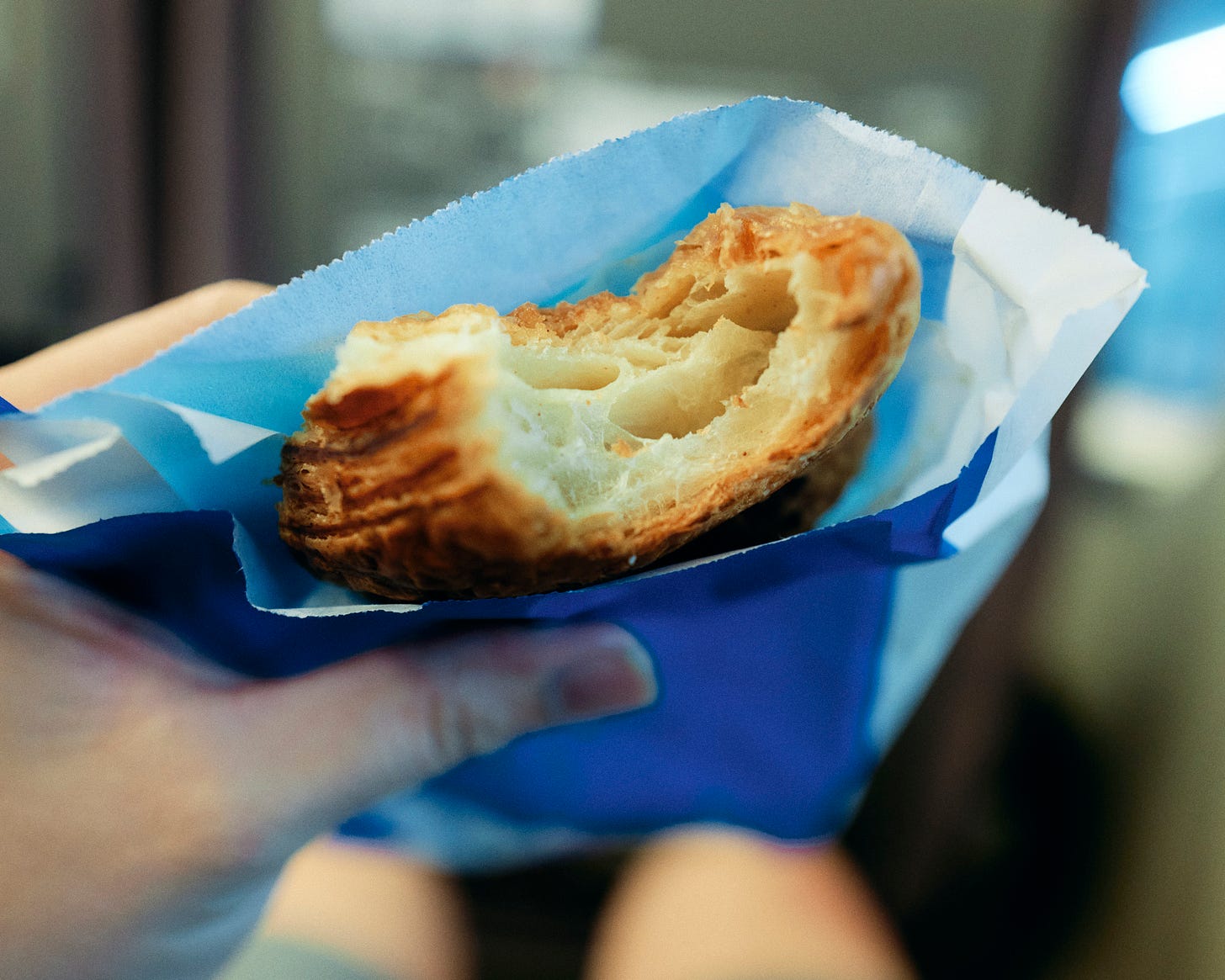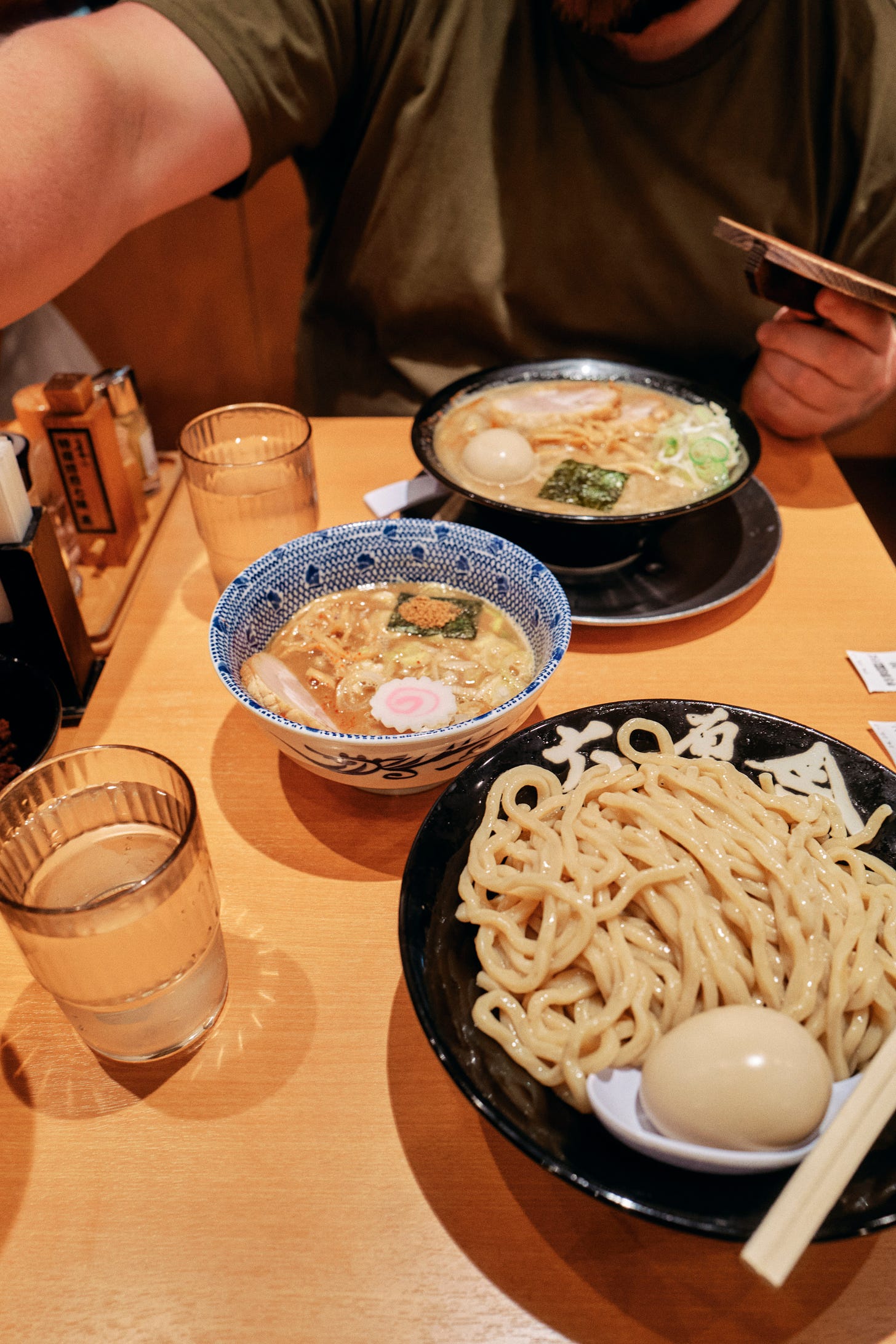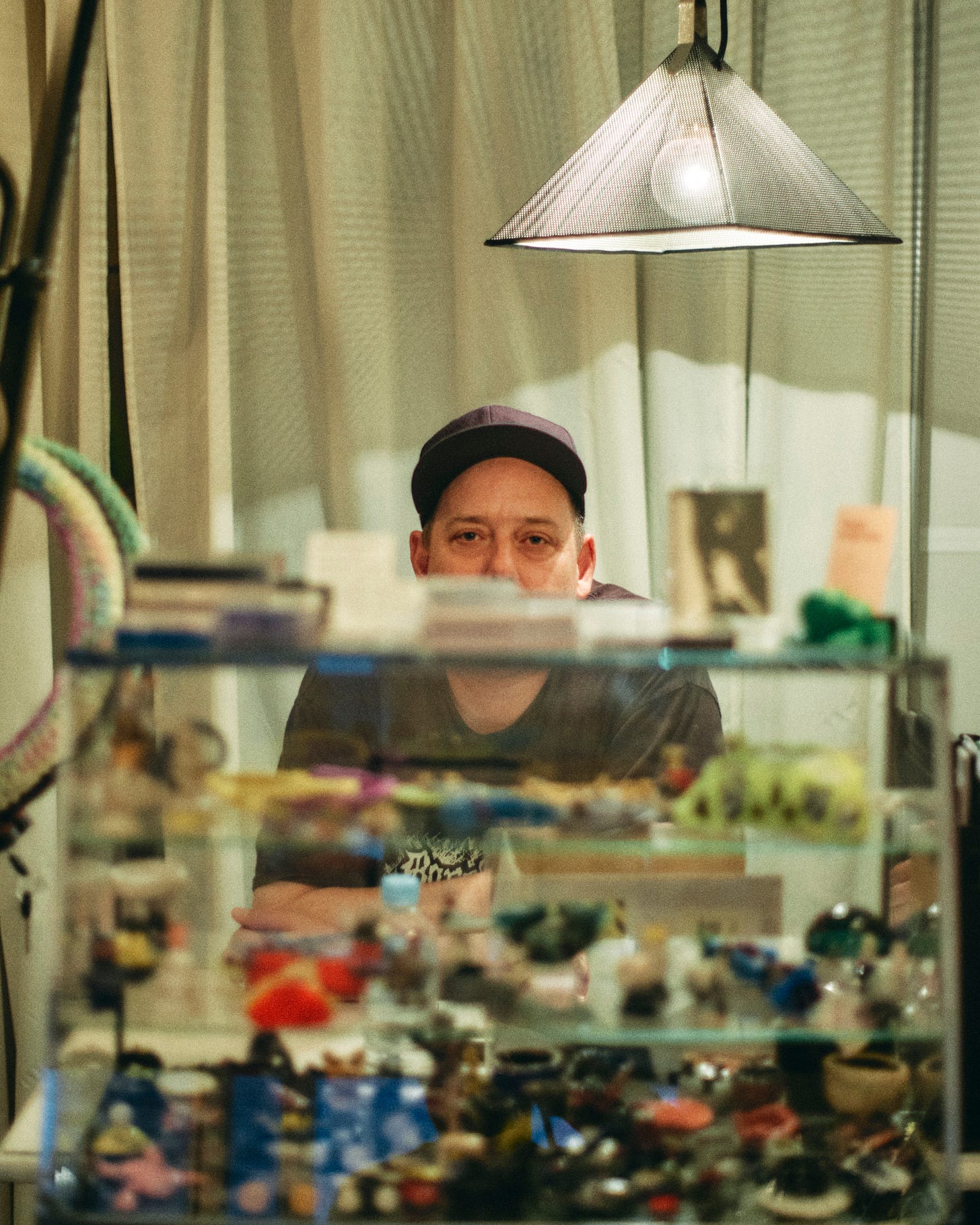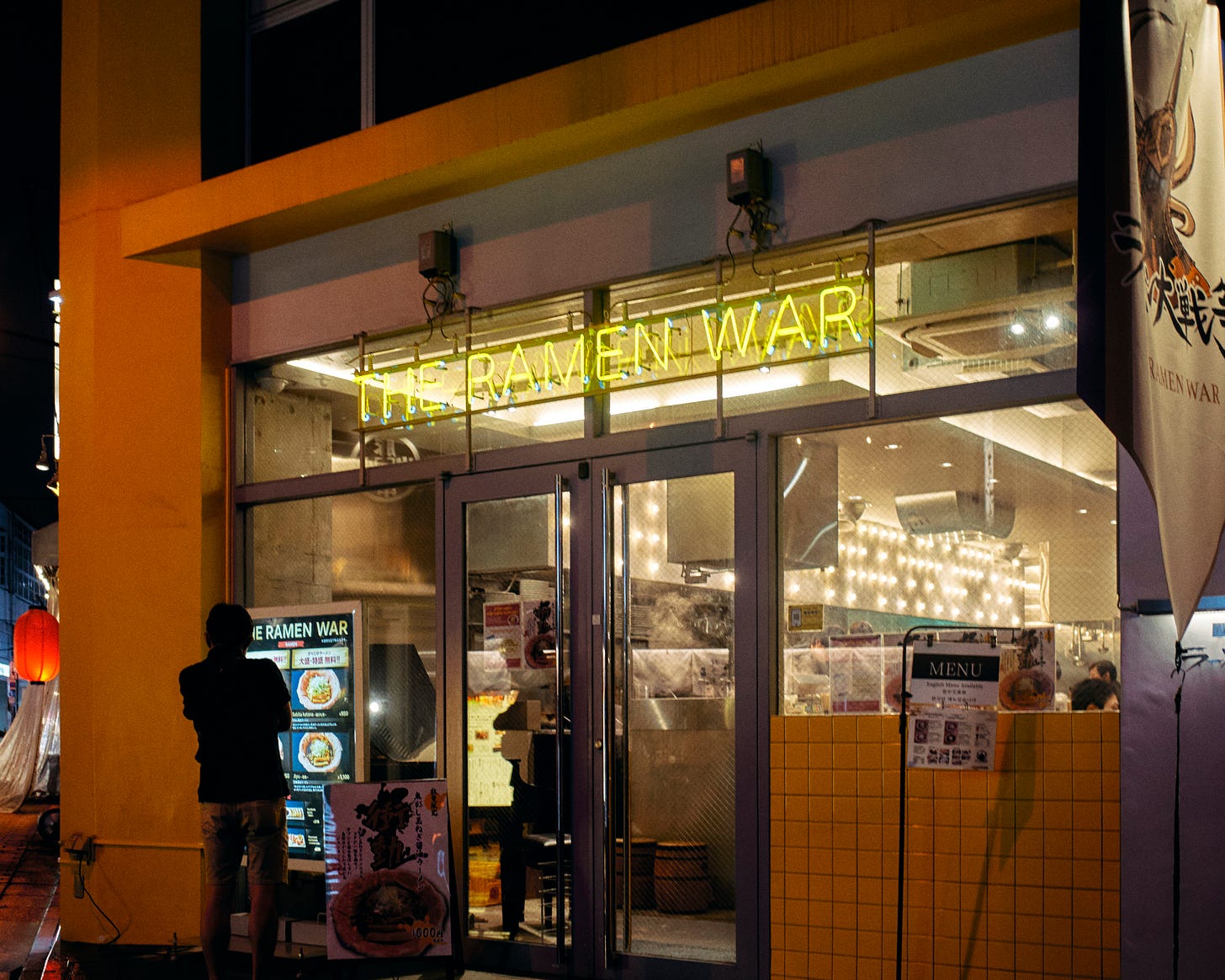Winners & Losers.
Matsudo Tomita Menban
Tomita Matsudo has been the highest-ranked ramen1 in Tokyo since forever.
Do I feel unsettled in the documentary ‘Ramen Heads’, that on his only day off of the week, Tomita walked around in flashy LV jacket and blings, eating ramen at the second and third highest ranked ramen spot in Tokyo? A little bit.
Do I feel sorry for his kids, that during weekends, they had to eat ramen for lunch and dinner? Well, at least they see their dad.
Will I go to Chiba at 7am, to get a ticket, and return hours later to taste it?
Hell no.
But I will try their branch near Tokyo Station.
I’ll say it again: after sushi and soba, tsukemen aka the ‘dipping ramen’ is perhaps the only true ‘original’ Japanese creation in recent decades.
Borrowing the concept of ざる蕎麦 zaru soba, we dip thick noodles into a concentrated broth, consuming them one mouthful at a time, to truly enjoy the noodles. This way, we don’t have to eat fast or burn our tongues to prevent the noodles from degrading in the hot soup.
Traditionalists hate it because tsukemen often taste lukewarm, but the young will love whatever their parents hate. Your Tampopo method of eating ramen has no power here with tsukemen.
As for me, well, we don’t get any tsukemen at this caliber in Australia (or Fukuoka).
So, Matsudo Tomita Menban is automatically a winner.
It was perhaps the thickest noodles I’d ever eaten - slippery, bouncy, chewy … all the good adjectives for noodles. But it also feels like udon, but with kansui.
There were instructions of eating the noodles first, then try dipping half of the noodles into the broth, then full dipping into the broth.
I say, let me eat in peace.
Towards the end, if you have any broth left, you can request for a lighter stock with yuzu to mix and finish it off.
Like soba yu.
When we left, the shop was packed.
All Seasons Coffee & Eight Coffee
My lunch with the ‘Keio’ gang was at 12pm in Shinjuku.
I thought it’d be a great idea to meet up with Yuma for coffee in the morning around Shinjuku.
Both spots I picked (one for breakfast; the other for posterity) were filled with tourists. English speaking, signboard kicking tourists. (Wait, I’m one of them.)
Perhaps, it wasn’t the cafe’s problem, but simply the demographic on a rainy Saturday morning.
I ranked both as a slight lost.
As in, the cafes could be in Seoul, Taipei, Singapore, and you would not have bat an eyelid. Nothing new to takeaway (sorry) here.
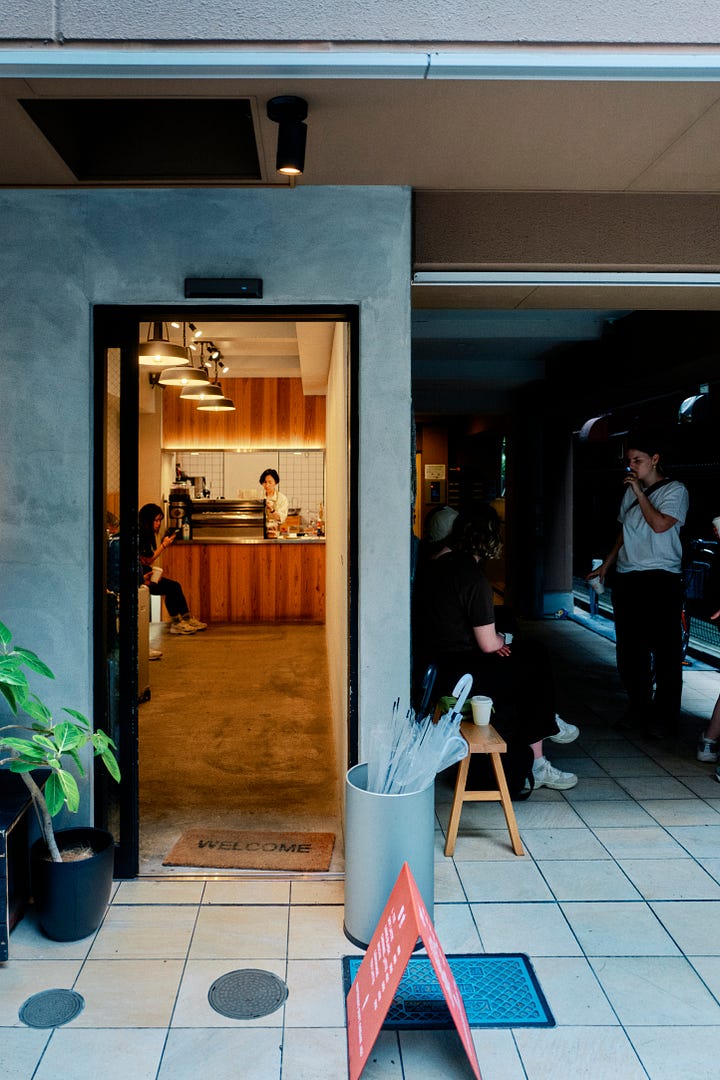

The redemption was the traditional snack shop we stumbled across on the walk back to the station. I bought some roasted broad beans (300 yen) out of politeness, and was completely blown away in my hotel room that night.
Ok, gentrified coffee shops in Shinjuku, you get a draw.
Oto Oto, Shinjuku
Satomi picked the place for meet-up, and I stupidly did not take any photos of the interior or exterior. To be fair, anywhere your friend took time to coordinate, plan, and book has to be an automatic win.
It was a difficult choice to pick from the chirashi sushi box, or the sashimi set, or the katsu set, or the unagi set, and in the end, I went with the safe, all-inclusive tempura set.
They had 十四代 Juyondai sake for 1000 yen per glass on the menu so it’s a win win win2 for me.
Yakitori Nakayama
No research, guide, or recommendations, stars, hats, macarons will ever beat that local shop your local friend brings you that serves local food.
It’s not the destination, not the journey, but the company.
After lunch at Shinjuku, I visited Shoh’s home in the suburb of Kyodo near Setagaya. I designed the name plate at their entrance, and in return, I received his children’s affection, and the biggest win of the trip.
Yakitori, on the second floor of a shop, so narrow that made me feel both like VIP and the fattest man on earth.
No celebrity chefs anywhere in the world will find this place.
Things I tried for the first time: iburigakko, signature smoked pickleds made famous by Akita prefecture.
Natto deep fried with bean curd skin.
A patty made of thin slices of ham, then crumbed and deep fried like the normal katsu. I’ve seen it in magazines, food shows, and blogs, thinking it’s just a fad. But there it was, in the wild. Although this ham was a thick one, it’s something I had absorbed and filed in my memory bank. When I wake up, I can tell Morpheus: I know how to make hamu katsu.
This win was so big, that I even learned how to use the overlay function in the software to make a video for you.
Echire Butter
From the highest of high, to the lowest of throat singing, we have Echire Butter from Marunouchi.
During our walk after ramen, Satomi pointed to the Echire shop and I instantly recognised one of the main characters from Asako Yuzuki’s book ‘butter’ - the butter. It was Friday night, and everything was sold out.
I looked around the corner from Echire, and saw a Joël Robuchon cafe. Did the author just walk around the richest area in Tokyo and took names for her book? I should also write a murder mystery surrounding Grossi and Lune.
Despite my suspicion of the polished brand, I figured it’d be the perfect souvenir for Chika’s family and returned Monday morning. On top of a box of madelines and financiers, I added a croissant to try on the train.
I don’t know about you, but I watched enough of Old Man Teh’s reel to know that the butter was either not locked in at the right thickness and temperature, or the humidity was all screwed up. It was not fluffy, greasy and tasted raw on the inside. I’ve had better ALDI croissants.
I was LUNE’d in Tokyo.
Shame on myself, for being swayed by the beautiful building in the middle of the city.
All the characters in the book were shallow as hal.
Don’t tell Chika’s family though. They loved the pastries.
*laughs and cries manically in consumerism*
Rokurinsha
My whole life, Rokurinsha has been a win.
I queued up with my wife, queued up with my friends, snuck out to taste two bowls in the Ueno branch two years ago while traveling with family.
The original representative of tsukemen.
So when I found out Tas was in town, and we were meeting in Tokyo station before my departure, I also wanted him to taste the win. To be the fixer of ramen.
Tas seemed fine with his soup version, which I thought was a better choice if you’re not familiar with tsukemen. But I hid my unfinished noodles in the broth bowl.
Perhaps Tomita has blown Rokurinsha out of the equation. A review can’t be objective without comparison, and as much as I thought Tomita was ‘pretty good’, its sub branch was no doubt better than the main branch of Rokurinsha.
That, or Rokurinsha has been watered down by tourism.
In 2024, I can’t bring myself to label it as a loss, but can’t honestly say it’s a win.
Pintology
I messaged Ian, saying I have been following him for decades. I bought his book during lockdown. He writes, designs, teaches, creates font, merchandises in Tokyo. I don’t think I know anyone else that’s more authoritative in Japan’s design history than Ian.
He replied as I was on the bullet train to Tokyo, he’d even open up shop for me in Sasazuka on Sunday to have a browse.
After that we walked to Pintology, a whiskey bar owned by Kyle, his fellow lecturer, and I thought, sure, I could stay for a 45-minute pre-dinner drink. My single malt Tsunuki whiskey was sweet white chocolate on the first sip, before the oak and wasabi pungency hit.
In Melbourne, bars are loud, sweaty, sticky, reeks of alcohol, blasted in sports channel. In Pintology, people come and go, the bar owner blows a horn if it’s your birthday, the old Japanese guy speaks to you even if he doesn’t understand English, the young Japanese guy speaks to you in English even if you understand Japanese. This guy from Sweden wouldn’t let me leave, because he just arrived. Maybe, because I was under the aura of Ian. Maybe, this is the right slice of life in Sasazuka. If I tried harder, if I was younger, more adventurous, more talented.
By the time I left, it was almost four hours later.
Ian said c’mere and hugged me as we said goodbye, insisted I’m a nice guy, and will be alright.
Ramendaisensou
On my way back to the hotel, I realised I had nothing to eat but a glass of whiskey since lunch. Ian and Kyle gave me lots of lots of lots of food advice, but it was 9.30pm on a Sunday - most shops were closed, or never opened to start with.
It’s easy, Kanda station has like 20 ramen restaurants within two blocks aaand they’re all closed.
Just when I was about to give up for onigiris from a kombini, I saw the sign.
I’ve heard about this ‘war’ franchise by the UNCHI company.
All of the brands have this epic Roland Emmerich ‘mankind vs noodles’, ‘us vs them’, ‘shoyu vs miso’ theme, as if noodles were equivalent to Godzilla. Ever seen those corn chips campaign - support ‘team chicken’ or ‘team cheese’ by purchasing more? Vote for your favourite idol by buying the CDs with their faces on it? Whoever wins, we lose.
It was comical when I first saw the sign, when the shop was empty and my stomach was full from yakitori. Different when everywhere else was closed on Sunday, and this place was packed.
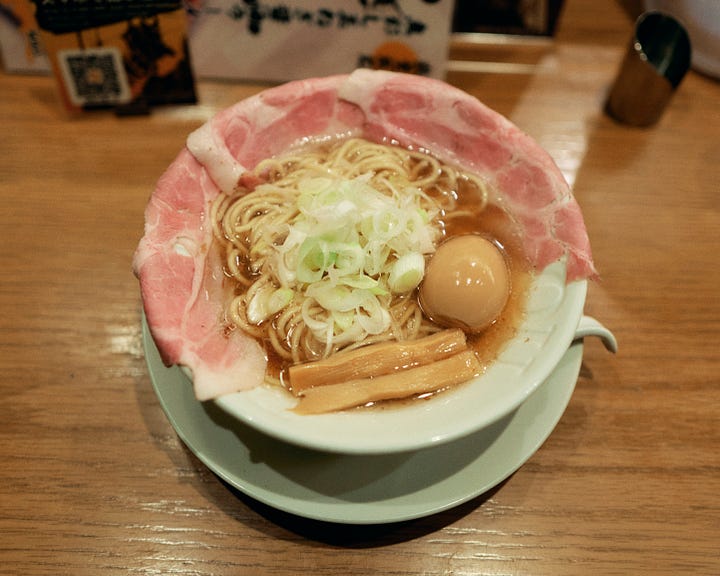
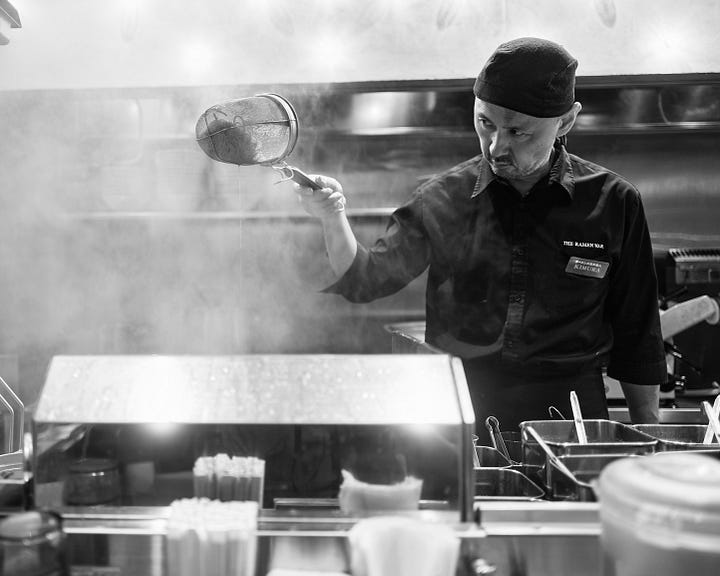
I’m never a fan of the modern plating of ‘flappy meat on the bowl’, too revealing, and it’s exposed to EVERYTHING in the air. The only justification I can think of is, this way, the soup doesn’t cook the perfectly sous vide charsiu like shabu shabu. But wait, why don’t you just cut the charsiu thicker? Shut up, Harvard.
I was shocked to see an older man making ramen, perhaps the first ever this trip.
I turned a major blind eye on Issou, Tomita, Rokurinsha’s kitchen of kids and aunties, telling myself if the SOP is solid, it shouldn’t matter who makes the ramen.
Surprisingly, at this most franchise looking of all places, this guy was inspecting the noodles and stock, giving instructions to the younger guy who only makes gyoza, reminding the other girl to clean tables and to greet guests at the register. A hierarchy.
I could not fault the noodles.
I could not fault the soup.
Did I have food envy looking at the lady next to me with her soupless mazesoba? A little.
But I picked the clean chicken broth shoyu with bonito flakes, and that was what I needed.
A surprise win.
A House in Musashi-Kosugi
The black sheep win, is me making dumplings in Satomi’s kitchen.
When I booked my tickets to Tokyo, I was imagining spending hours in a bookshop, but somehow I ended up training to Musashi-Kosugi, shopping, and making fried rice, dumplings, non-spicy mapo tofu, stir-fried vegetables and spring onion pancakes for a family of four.
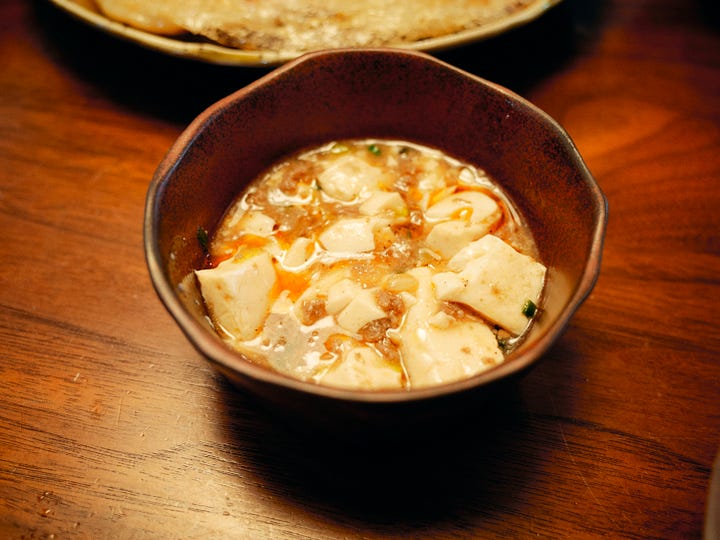
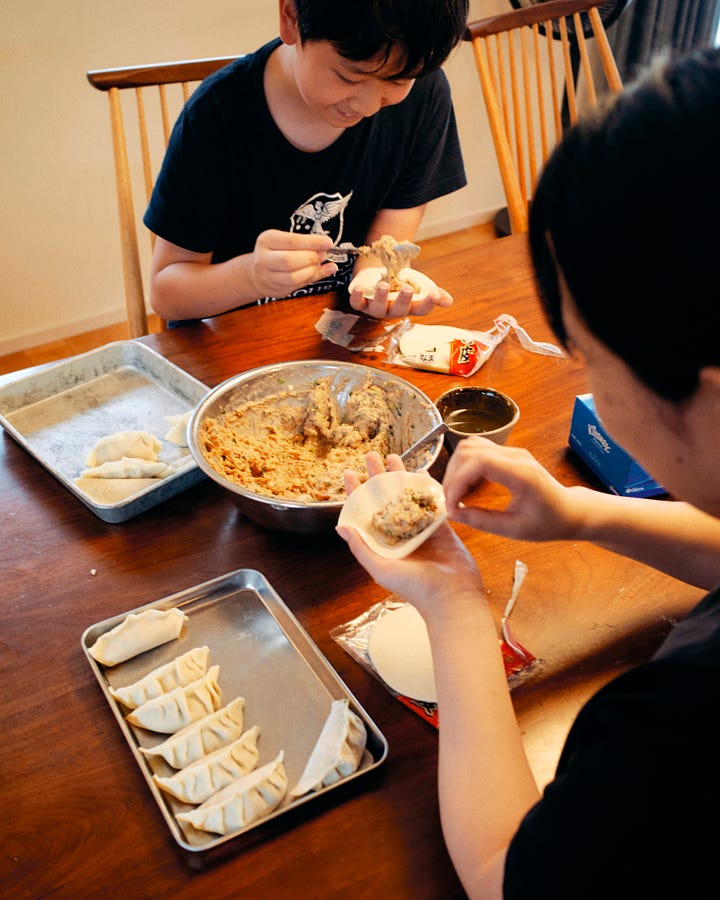

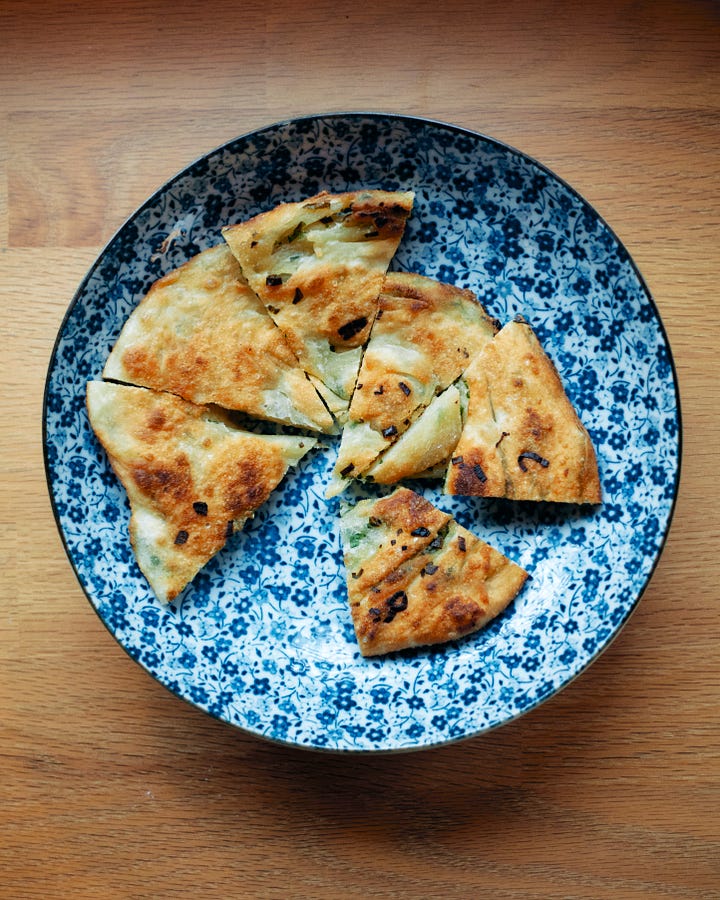
Since Chika and Hana left in Melbourne, I have realised my purpose in life has been reduced to cooking.
Not for myself, for I could cook a pot of dal and survive for three days.
Before we walked into Shoh’s home, he warned me that his youngest may be shy and not talk to me.
When we arrived at the yakitori restaurant, he demanded I sit between him and his sister.
Shoh asked if he could send his daughter to our place in Melbourne one day, during school holidays or something, for experience.
“Sure, Hana has a big bed. We’ll have ice creams everyday,” I said.
Her eyes beemed up.
“Do you remember anything about Australia?” I asked her.
“Yes, I drank coffee with you,” she said.
She was thinking about babycinos in South Melbourne.
That time she visited her dad when he was on transfer.
It dawned on me that night, that the biggest loser, was my youth.
The death of my younger self, who wandered around Kinokuniya for hours, fantasizing a life in Japan.
But from the lost, comes a win:
When you’re in Tokyo, faced with the millions of sign boards targeting billions of people, you really feel like you don’t matter.
But I had become the old man kids remember things about.
As the wife of a famous astronaut once said: now we’re just here to be memories for our kids.
Be right back, Chika’s mother just harvested a bucket load of eggplants and I need to go buy mince meat to make mapo eggplant tonight.
Their Tabelog score is 3.9/5 LOL
A bottle goes for $500 in Melbourne




